Hello all,
A few months ago, I took my boat out fishing. While idling on a spot, I noticed smoke from my cockpit area all the way down my gunwale area. I turned off the engine immediately, and the smoking stopped. I started the engine again, and the wiring started smoking again. Shut down and got towed. Since then I have contemplated back and forth to keep the boat, or cut my losses and let it go to someone how has the time it needs to get going again. I'm currently at the point I want to give it a shot. First thing I need to figure out is what caused the issue. The alternator was rebuilt recently, and a wire melted coming off the ignition switch, a hot wire. There is a ground wire that is shared with the ignition and the volt meter. No idea if that has anything to do with the problem. Next, I can now start the engine, turn on appliances, and everything seems fine. However, I noticed too that if I turn on appliances, the volt meter drops. Is this due to bad alternator, or wiring/connection issues? I am considering attempting to re-wire it myself. I bought the book "Boat Owner's Illustrated Electrical Handbook" by Charles Wing. I understand some stuff, but not as much as I feel I should to attempt this yet. But, I know there is plenty of help here, and info here and on the web. I noticed that I don't notice any fuses in my wiring, none associated with the switches, nor a fuse block that I've located. With that said, I'm confused on some things. One is, if I order something like this, https://www.bluesea.com/products/8261/Contura_Water_Resistant_12V_DC_Panel_-_8_Position, do I need a fuse block still since there are fuses for each switch? Also, I tried figuring out where the power to the console comes from by following the large wire coming off my battery switch, and noticed it went to the starter, then the wire from there went to the engine. I didn't get beyond that. Does this sound right? I attempted to attach some photos to give you an idea what I have, and some things that I noticed that I feel may be part of the problem I experienced. Sorry for the long read. If I have too much going on in this one thread, and need to make multiple threads, please advise me to do so.
Thank you very much for reading this, and helping me,
Grady
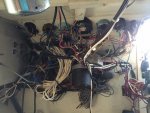

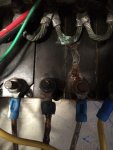
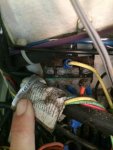
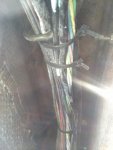
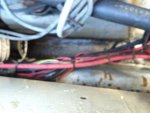
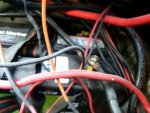
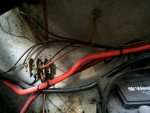
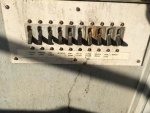
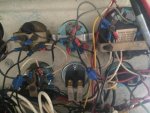
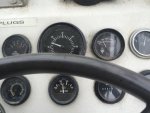

No appliances on

Flood light, VHF, and cabin light on.
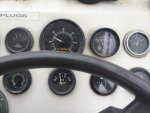
Above items back off.
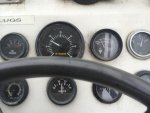
A few months ago, I took my boat out fishing. While idling on a spot, I noticed smoke from my cockpit area all the way down my gunwale area. I turned off the engine immediately, and the smoking stopped. I started the engine again, and the wiring started smoking again. Shut down and got towed. Since then I have contemplated back and forth to keep the boat, or cut my losses and let it go to someone how has the time it needs to get going again. I'm currently at the point I want to give it a shot. First thing I need to figure out is what caused the issue. The alternator was rebuilt recently, and a wire melted coming off the ignition switch, a hot wire. There is a ground wire that is shared with the ignition and the volt meter. No idea if that has anything to do with the problem. Next, I can now start the engine, turn on appliances, and everything seems fine. However, I noticed too that if I turn on appliances, the volt meter drops. Is this due to bad alternator, or wiring/connection issues? I am considering attempting to re-wire it myself. I bought the book "Boat Owner's Illustrated Electrical Handbook" by Charles Wing. I understand some stuff, but not as much as I feel I should to attempt this yet. But, I know there is plenty of help here, and info here and on the web. I noticed that I don't notice any fuses in my wiring, none associated with the switches, nor a fuse block that I've located. With that said, I'm confused on some things. One is, if I order something like this, https://www.bluesea.com/products/8261/Contura_Water_Resistant_12V_DC_Panel_-_8_Position, do I need a fuse block still since there are fuses for each switch? Also, I tried figuring out where the power to the console comes from by following the large wire coming off my battery switch, and noticed it went to the starter, then the wire from there went to the engine. I didn't get beyond that. Does this sound right? I attempted to attach some photos to give you an idea what I have, and some things that I noticed that I feel may be part of the problem I experienced. Sorry for the long read. If I have too much going on in this one thread, and need to make multiple threads, please advise me to do so.
Thank you very much for reading this, and helping me,
Grady












No appliances on

Flood light, VHF, and cabin light on.

Above items back off.






















